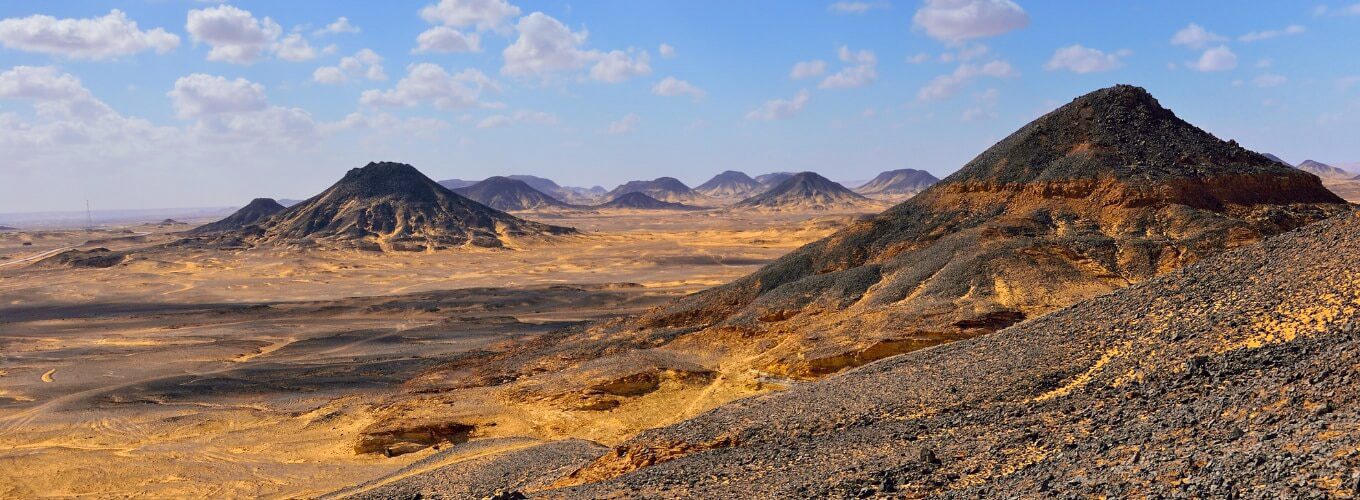The Black Desert, located south of the Farafra Oasis in the Western Desert, is a natural wonder that attracts visitors worldwide. “Black Desert” comes from the black powder layer covering its mountains, highlands, and sands. This powder dramatically affects the landscape, covering some mountains and highlands with a hat-like coat and others with black velvet robes.
The Western Desert of Egypt is more than just dunes. It is home to five large oases (plus one artificial one), the Black Desert, the White Desert, massive mountain plateaus like the Gilf Kebir (roughly the size of Switzerland), and the ocean of giant dunes that extends from Siwa—Oasis in the northwest to Gilf Kebir in the southwest.

Features of the Black Desert:
It is characterized by isolated hills forming an island archipelago. These hills are a distinctive feature of the landscape, distinguishing the Bahariya Oasis Depression from other desert depressions. The hills vary in size, composition, height, and shape, and some are dark in color and composed of iron dolerite and quartzite. Others are redder, with surface rocks of iron sandstone, while a few are white limestone.
The outskirts of the Black Desert feature glowing black volcanic hills that add to the region’s charm at sunrise and sunset. During lunar nights, especially during full moons, the desert looks like an oil painting of an eco-resort amidst clouds. Near the end of the desert, the Black Volcanic Hills evidence the eruption of dolerite, a dark volcanic material that dates back to the Jurassic period, about 180 million years ago. These eruptions formed the type of black rock that covered the area.

Marsous Mountain:
One of the most famous mountains in the Black Desert is Jabal Al-Marsous, which is a volcanic crater wholly covered with volcanic alum. The material covering the mountain is like the wrinkles of time on its rocks, giving it a sense of history and glory. Another famous mountain is Mount Panorama, which visitors climb to take panoramas of the Black Desert from the highest point.
English Mountain:

The most famous mountain in the Black Desert is Mount Inglis, a historical tourist attraction where visitors can see ruins dating back to World War I. During that period, the British occupation forces used this mountain to deploy their troops, as it is—the highest point in the Black Desert. Captain Williams of the British Army ordered a building of three rooms and a bathroom to be built there to observe and observe the Libyan Senussi forces who were attacking the oasis at the time.
In 2010, the Black Deserwas t declared a nature reserve after the discovery of the second-largest dinosaur skeleton in the world near the Dast and Maghribi mountains. The area is home to fossilized remains of shrubs and forests, indicating that this desert was once a land of green and freshness, providing many herbivores and carnivores, even dinosaurs, with food and shelter.
Conclusion:
The Black Desert is a unique and fascinating natural wonder that provides a glimpse into the geological history of the Western Sahara region. It’s dramatic landscapes and historical significance make it a must-visit destination for anyone traveling to Egypt.

